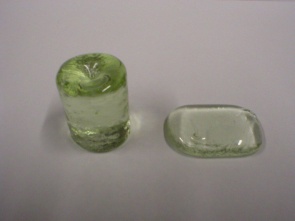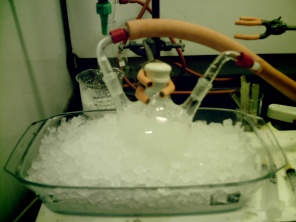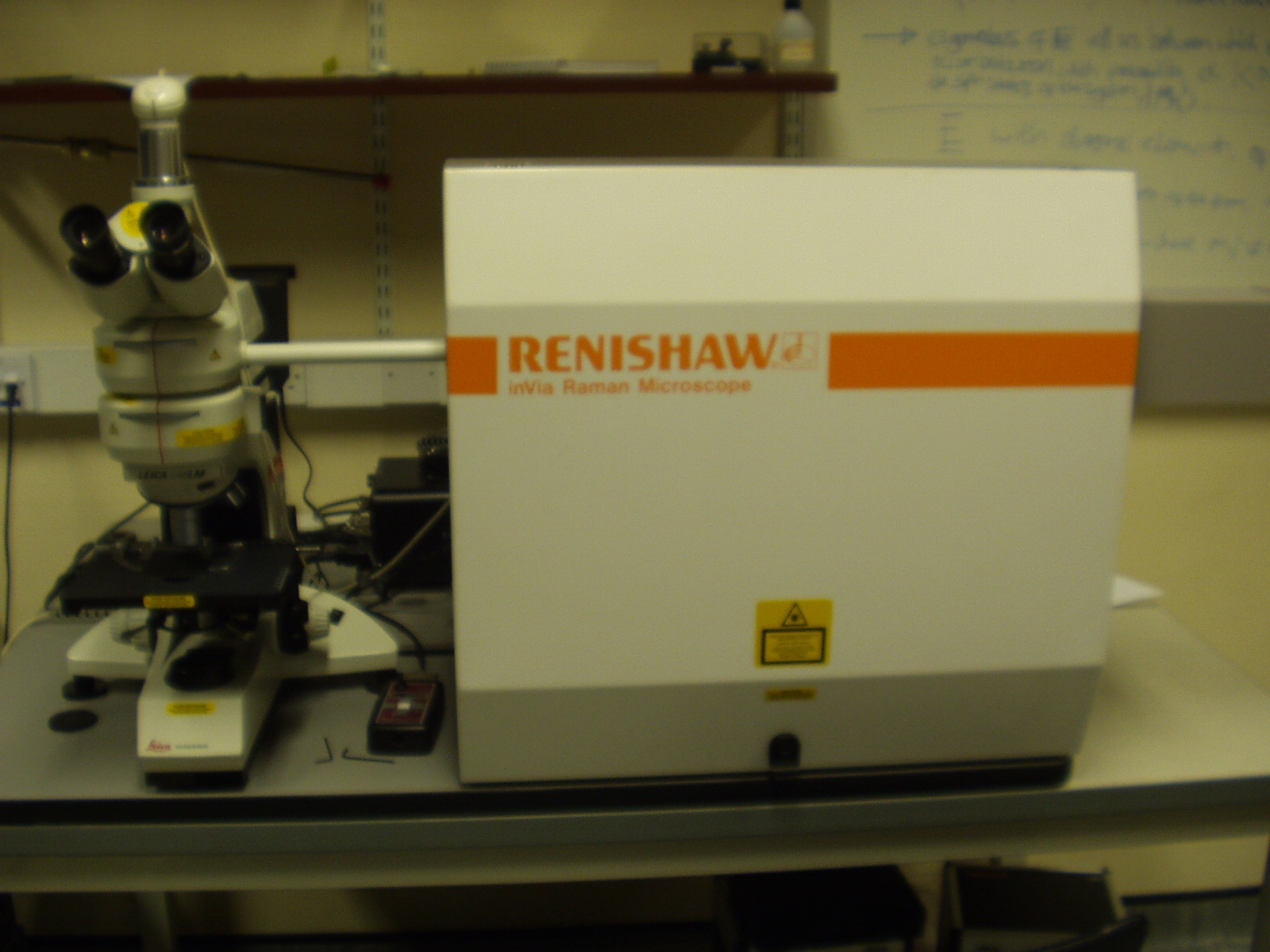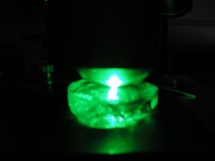Techniques and Facilities
Our group uses a wide range of equipment and techniques in the course of our research.
Glassmaking
Furnaces available for glassmaking include both vertical and horizontal tube furnaces, allowing the use of atmospheres such as nitrogen or argon, as well as numerous traditional 'box' furnaces with operating tempeatures of up to 1700°C. Two furnaces operate under a fume-hood to extract hazardous gases that may be released during a melt.
To expand our repertoire of glassmaking methods we have also been experimenting with sol-gel techniques - a 17O-enriched SiO2 powder has been manufactured using an in-house setup.
|
|
|
| A mixed-alkali borosilicate glass produced via melting in one of our furnaces (glass manufactured by Ben Parkinson). | The sol-gel apparatus used to manufacture the 17O-enriched SiO2. |

Through collaboration with Professor Steve Feller and his colleagues at Coe College we have access to a high-speed, motorised, twin-roller quencher which allows samples to be cooled at rates in excess of 105 K s-1. This has enabled the glass-forming ranges of many glass systems to be extended, as well as allowing new glasses to be made. More information on this glass-forming technique can be found in: J.E. Kasper, S.A. Feller, G.L. Sumcad, J. Am. Ceram. Soc. 67 (1984) C71.
Thermal Analysis Techniques
A wide range of thermal analysis equipment is available to us allowing us to perform measurements using Differential Thermal Analysis (DTA), Simultaneous Thermal/Thermogravimetric Analysis (STA or TG+DTA) and Differential Scanning Calorimetry (DSC). The STA apparatus can also be connected to a Mass Spectrometer in order to analyse vapours released by a sample during a thermal program.
Corrosion measurements
Leach testing measurements are conducted, based on the International Standard Soxhlet Leach Test Procedure.
X-ray Diffraction
Ferroelectrics and Crystallography group's diffractometers.
Solid-State Nuclear Magnetic Resonance
NMR group's spectrometers - High-field Varian 600 spectrometer, Oxford Instruments 360 spectrometer, two Oxford Instruments 300 spectrometers (including one field-swept spectrometer) and one 200 field spectrometer.
Raman Spectroscopy
Raman spectroscopy of our samples is conducted on the Diamond Group's Renishaw InVia Raman spectrometer using either a 20mW, 514nm Argon laser or a high power (>300mW) 785nm, near-infrared, compact diode laser.
|
|
|
| The Renishaw InVia Raman microscope. | Borosilicate glass under the 514 nm green argon laser |
Neutron Diffraction
The GEM diffractometer at ISIS is used by members of our group for examining both vitreous and crystalline samples. GEM is discussed in detail in the paper "Results on disordered materials from the GEneral Materials diffractometer, GEM, at ISIS" by A.C. Hannon (![]() PDF, 1.0MB).
PDF, 1.0MB).
Energy Dispersive X-ray (EDX) Analysis
Microscopy group.
Extended X-ray Fine Structure (EXAFS)
Station 9.3 at the SRS at Daresbury has been used in the past to gather EXAFS data on the Pb LIII edge.
Computer Modelling
A relatively new endeavour for our group, we are currently investigating the use of Reverse Monte Carlo modelling techniques to retrieve more structural information from the data obtained by other methods (such as neutron diffraction).




